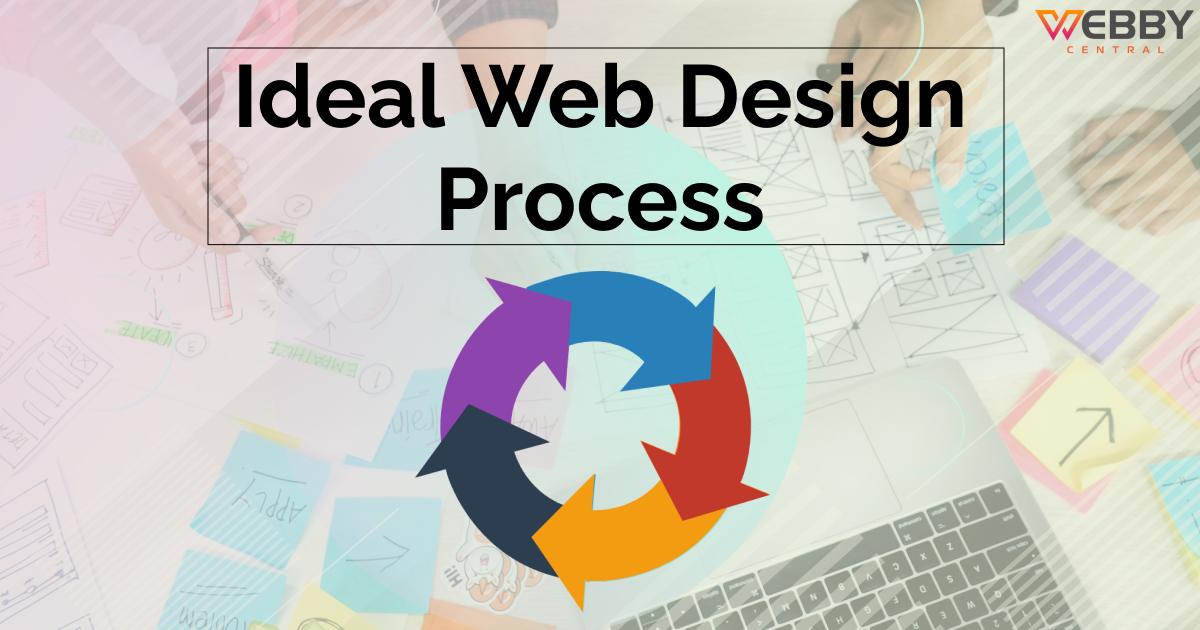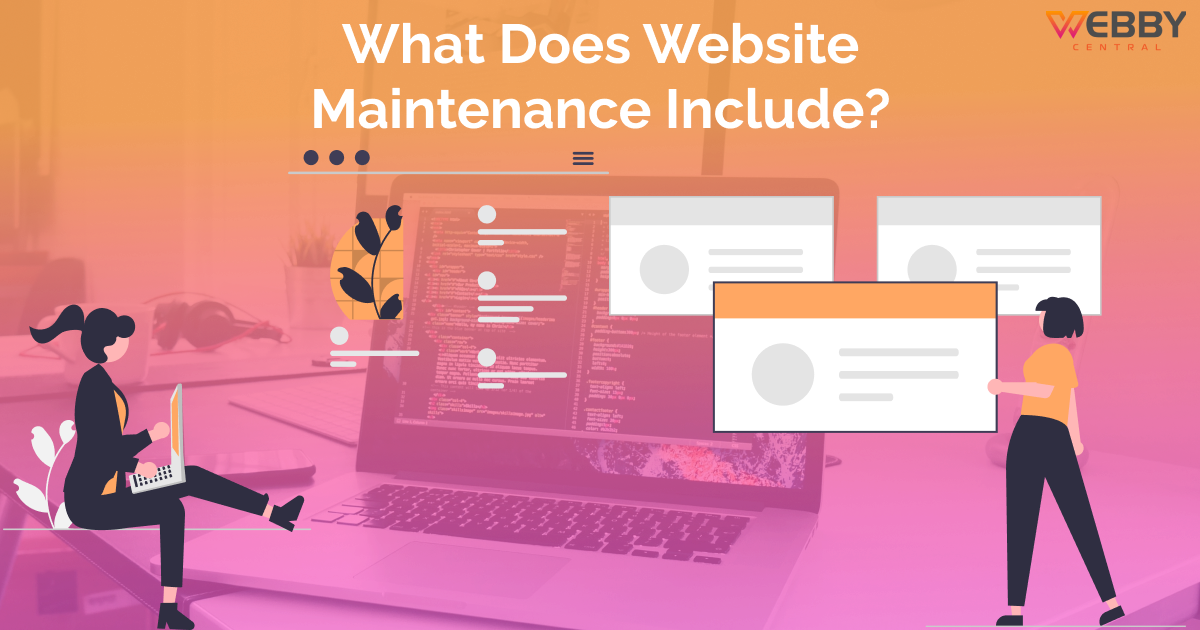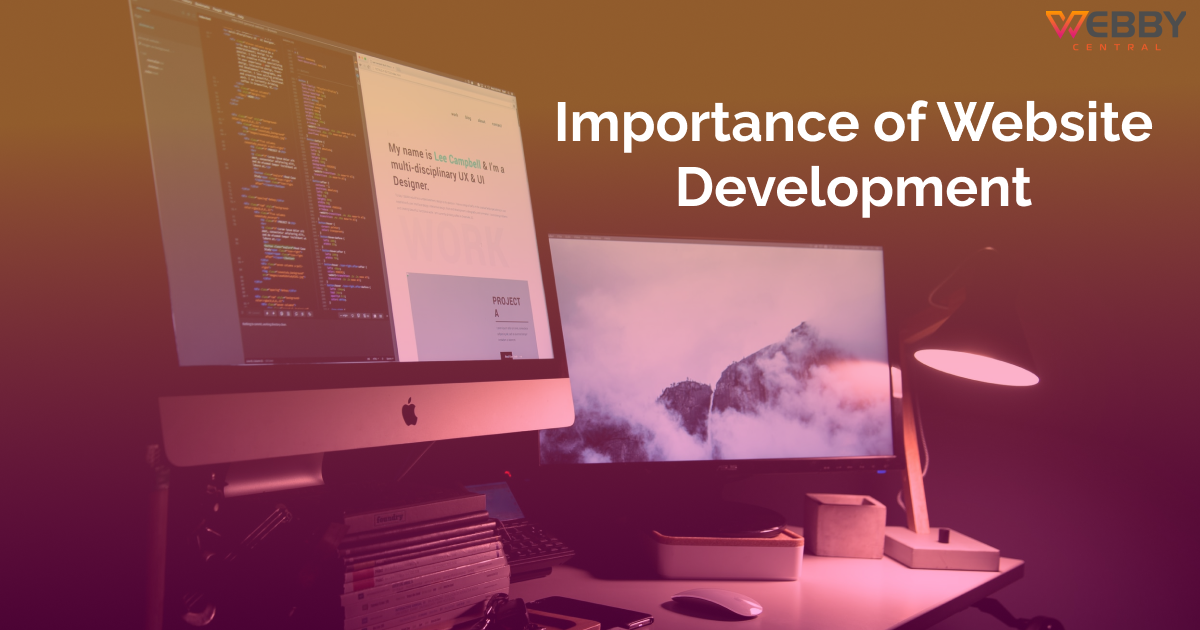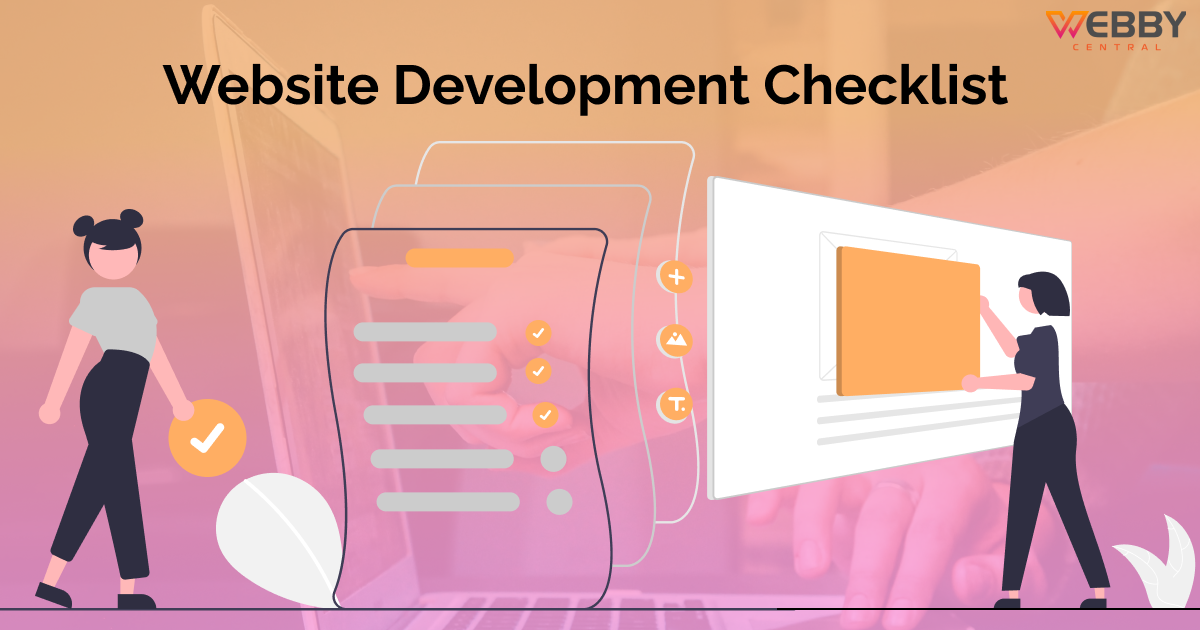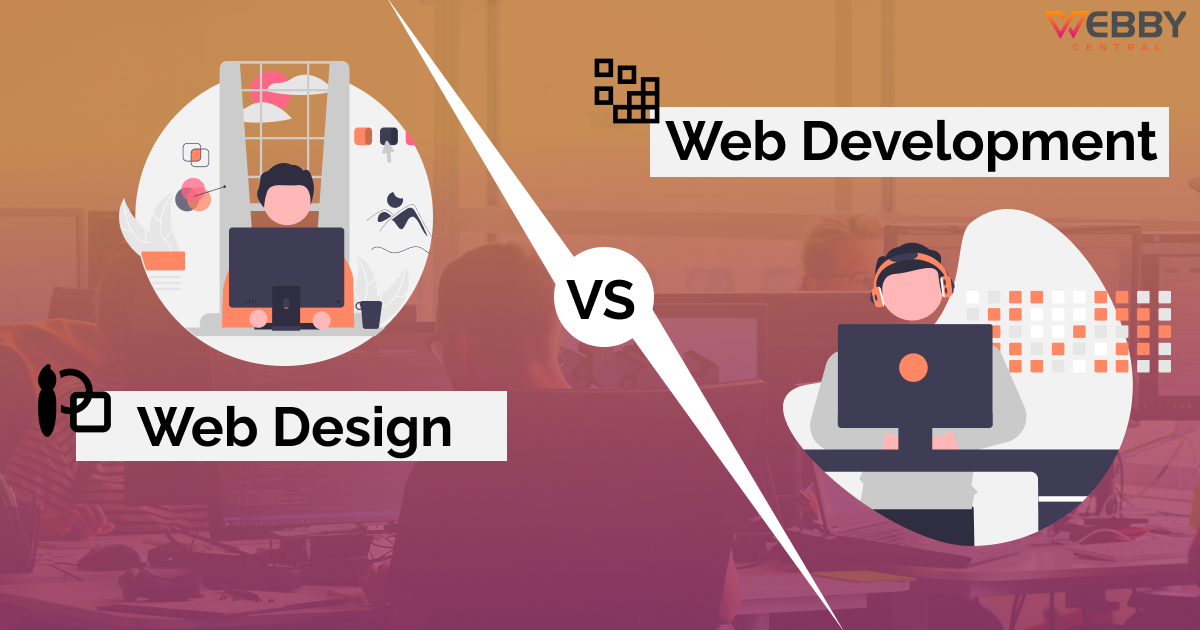If you want to expand your business and reach maximum people, you need to move online. Developing a persuasive website is the right way to start. This expert guide will tell you everything you need and want to know about web development.
We live in an increasingly digital society. Today’s generation spends the most time online, be it buying a product, using a service, reading a blog, or watching favorite movies/series. Almost 4.66 billion people were active internet users as of October 2020, encompassing 59 percent of the global population, and that’s massive.
Considering the amount of time people spend on the internet, businesses too have moved online. If you are a business owner but don’t own a website yet, you have a high chance of losing out on your potential customers online. To rescue that, you’ll be needing the assistance of a professional web development company that can build a robust website tailored to need your business requirements.
Without any further ado, let’s get into the nitty-gritty of website development. Let’s discuss everything from basics to types, methodologies, process, technology stack, tools, and cost so that you have a better understanding of web development before starting out.
What Is Website Development and Why Do You Need One?
Website development is the process of building websites for internet people. Web development is all about coding and programming from scratch that powers the website’s functionality. Web development is usually broken down into three layers: front-end (client-side coding), back-end (server-side coding), and database technology.
Customer behavior has changed to adapt to the digital age. You need a lead magnet and a sales booster website to serve them properly. A website proves your brand credibility, strengthens your relationship with your users, lets you showcase your product/services the best possible way, boosts your online marketing, and gives you a competitive advantage.
Top 10 Most Popular Types of Websites
These days, the internet is flooded with various types of websites already. However, today, we will list the most popular kinds of sites you often see around the web. Take a deep dive into the well-known types of websites.
Portfolio Websites – These types of websites are usually built to showcase one’s work. They display all projects and work; the one has done so far. These are simple websites and don’t take much time to get created.
Blog Websites – These types of websites offer valuable and informative content to customers. These types of websites’ setup are pretty simple and get developed easily based on one’s requirements.
Personal Websites – These websites are mainly for public figures and influencers out there. These websites are created to feature a person as a brand. These websites don’t comprise many pages or sections; hence developed quickly.
Business Websites – As the name suggests, these websites are business-centric and committed to depicting a particular business, the services the company/business offers.
E-Commerce Websites – These websites are widespread nowadays, allowing businesses to sell products and services online. These websites need robust features and integrations, thus take longer than other websites to get built.
Educational Websites – The sites of educational organizations and those who are offering online courses fall into the category of educational websites. Depending on the requirements, these websites can take a few weeks to develop.
Social Media Websites – Facebook and Instagram are two major examples of these kinds of websites. These websites are built to let individuals share pictures, thoughts, or anything else with others online.
News Websites – These websites are mainly focused on journalism, including the latest news. These websites have a clean and simple structure and are primarily content-focused.
Forum Websites – These types of websites provide an organized way to publish public topic discussions. Anyone can register to start and contribute to the discussion accordingly.
Non-Profit Websites – These websites aim to provide both information on a charity and a way for people to donate. These websites do not take long to create as they don’t require heavy integrations.
What Are the Top Web Development Methodologies for Successful Website Development?
There are several website development methodologies to choose from depending on the project goals, requirements, size, timeline, team members involved, project management tools used, and more. Without any delay, let’s get to learn about major types of web development methodologies.
Waterfall
Waterfall is the most conventional and one of the most popular website development methodologies. Its simple approach fascinates many. The Waterfall approach requires a lot of structure and documentation and is used for web development projects with a clear and predefined
scope. The project is divided into several stages, including analysis, design, implementation, testing, and maintenance.
Agile
Agile is another widely used web development approach, often used for projects with no definite requirements and limited short timeframes. Agile is one flexible approach and best-suited to manage complex website development projects that involve variability. It supports quick modifications in the project’s scope and direction based on the market changes.
Scrum
Scrum uses an iterative approach to web development where the team is considered the key. This methodology requires self-management and self-organization, which means that it will be a good fit for smaller projects with experienced and organized team members. Scrum combines the flexibility and iterative practices of the modern-day Agile method and the structure of more conventional methodologies.
Kanban
Kanban is also an agile software development methodology. This approach is all about tracking team members’ capacity and giving them more time to do quality work. The Kanban approach is mainly focused on sprints and doing new things in short runs. This methodology comes with three stages — backlog, active, and done.
Spiral
Spiral is basically a hybrid of Agile, and Waterfall methodologies focused on early risk identification and mitigation. The team starts at the center of the spiral, then goes through four phases of development — determining objectives, risk analysis, and mitigation, software prototype development and testing, and evaluation by the client.
Ideal Web Development Process: 7 Simple Steps to Build a Successful Website
If well-executed, a good website development procedure will help you effectively create any type of website, with successful user traffic, good user experience, and high retention. Let’s look at the ideal web development process and the steps involved in creating one.
Information Gathering
Gathering information is the stage of discovering and researching. You need to get a clear understanding of your website’s purposes (what use will the site be), the main goals (what exactly you desire to achieve), and most importantly, the target audience (who you wish to target and why). Such website development questionnaires help to develop the best strategy. More information gathering means more clarity of your website.
Planning
Once the purpose and goals are clear, you need a well-thought-out plan for your website. Planning is all about gauging the current website needs, choosing technology stack and development methodology, defining deliverables, and estimating the timeline and resources accordingly. This will decide how your entire site will look like after development.
Designing and Architecture
This process lays out the user interface in a visually appealing way. A web design consultant you hire helps prepare a sitemap, wireframing, and planning the layout, including UI and UX design. After that, the real designing starts where creative UI designers emphasize visuals, typography, fonts, color graphics, animations, buttons, menus, and much more. This stage is performed considering the target audience in mind.
Content Preparation
This stage involves writing compelling content for your website so that you can communicate with your audience using the right words. Content writing involves creating catchy headlines, text editing, writing new text, compiling the existing text, and more. To ensure your web content is on-point, hire a full digital agency to analyze the market well and help you with the content requirements accordingly.
Development (Coding)
This is the stage where your website development finally starts. You have a purpose, wireframe, design, and content; all you need is a developer who can code everything and ready a functional website. A developer must know the interface, and the code shouldn’t disturb the look and feel of the entire site. This often calls for the developers to understand the design and navigation of the site.
Testing, Review, and Deployment
Once the website is developed, testing is probably the most routine part of the process. Before launching the site to the public, you need to test every single link to ensure that there are no broken ones among them. You need to check if your code follows the current web standards. You need meticulous testing because you can’t let people find an error and glitch in your website and doubt your credibility.
Support and Maintenance
Congrats! Your new website has successfully launched, but wait, that’s not the end. There are some follow on activities you need to consider and, i.e., post-launch support and maintenance, including upgrades and patching, incremental improvements, hotfixes, and troubleshooting to keep your website up and well running with no glitches and errors.
Technology Stack of Website Development
Every website consists of the front-end (client-side) and the back-end (server-side). The front-end includes everything that users will directly see and experience when they visit your website. However, the back-end is basically a “behind the curtain” thing where information is stored, sent, and received.
The technology stack comprises languages and frameworks. Let’s learn more about them and their role in website development:
Languages
Everything you see on a website (even the one you’re looking at now) is built using HTML, CSS, and JavaSCript. They are the languages developers mainly use to create webpages.
HTML – It is a basic programming language for web development, providing a site’s structure, such as words, titles, and paragraphs. HTML consists of a bunch of established “tags” and is written between angle brackets [<>].
CSS – It is a style sheet that essentially describes how HTML elements will appear on a webpage. CSS controls the website’s presentation, style, and formats, such as RGB values, border colors, background images, and more.
JavaScript – It is all about how much you control the behavior of your webpage. JavaScript makes websites interactive by manipulating various HTML and CSS features. In short, JavaScript advances your website.
Front-End Frameworks
React – Its Document Object Model (DOM) feature makes it special. React is an ideal framework for those who anticipate high traffic and need a stable platform to handle it. It offers exceptional functionality for front-end development.
Ember – It is a productive front-end framework used for building modern websites. It includes everything you need to build rich UIs that work on any device. Netflix and LinkedIn have used Ember for their front-end development.
Angular – The only framework based on TypeScript. Angular is unique with its two-way data binding feature, meaning real-time synchronization between the model and the view, where any change in the model reflects instantly on the view.
Vuejs – It is a simple and straightforward framework. Vuejs is smaller in size and offers two major advantages – visual DOM and component-based. It is versatile and helps you with multiple tasks, built to optimize web performance.
Backbone – It allows you to develop single-page websites quickly. It is a framework that is based on MVC architecture. Backbone can also run engines like underscore.js and Moustache.
Back-End Frameworks
Express.js – It is a trending framework that provides fundamental web development features, trusted by global brands like IBM and Accenture due to its advanced features. Express.js supports REST API apps and is highly flexible.
Ruby on Rails – It is a server-side web framework based on MVC (Model-view-controller) and written in Ruby that emphasizes some worthwhile software engineer paradigms like “don’t repeat yourself” and “convention over configuration.”
Django – It is one of the most popular open-source frameworks written in Python language. Based on the DRY (Don’t Repeat Yourself) concept, Django emphasizes reusing existing code for faster work. It is often referred to as the web framework for perfectionists with deadlines.
Spring Boot – It is a lightweight and open-source Java-based framework used for creating standout websites. Spring Boot leverages the Spring platform and third-party libraries to enable the developers to get started with minimum hassle.
Laravel – It is the most popular back-end framework of PHP. This framework offers incredible versatility focusing on every segment, from building exceptional websites for small and medium-sized enterprises to large multi-million organizations.
How Much Does Website Development Cost?
A single diet plan won’t work for all the people in the world. Likewise, when it comes to web development costs, you can’t simply quote a fixed amount for all types of websites. Every website has a different purpose, objective, needs, thus requiring different features, functions, and integrations. For example, a blog website and an e-commerce website definitely can’t be similar in terms of features, functionalities, integrations, and more.
Your website’s budget solely depends on your primary goal that your website will serve and the additional features you need. If we talk about average website development cost, the upfront cost of a site, including launching and designing, is $20,000 to $200,000 or more depending on the business size, type, needs, budget, and more.
Conclusion
The website has become a crucial part of everyone’s lives. Web development touches almost every part of your day and your business. We hope this complete guide to website development helped you understand all the important aspects of website development, from basics to popular types, methodologies, ideal process, technology stack, and cost. If you use this guide rightly, we assure you no one can stop you from having a successful website.
